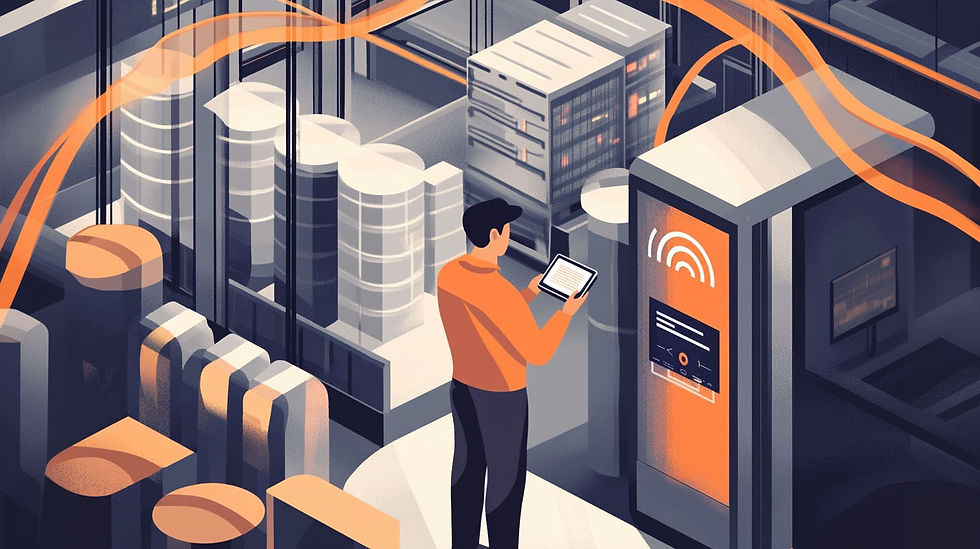Maximizing Efficiency: How to Effectively Convert Paper Processes to Digital
- PinPoint
- Apr 9, 2024
- 4 min read

Introduction
Businesses are increasingly moving away from traditional paper processes in favor of digital solutions. This shift not only aligns with the environmental push towards sustainability but also caters to the efficiency and agility required in today's connected workplace. Platforms like PinPoint are at the forefront of facilitating this transition, offering tools that streamline the conversion of paper processes to digital formats, thus enhancing operational efficiency and data accessibility.
The Case for Going Digital
Transitioning from paper-based to digital processes is not just a trend but a strategic move toward operational excellence. The familiarity of paper processes, while comfortable, comes with significant drawbacks such as time consumption, vulnerability to loss, and the need for physical storage, all of which can hamper efficiency and productivity. Conversely, going digital offers streamlined workflows, reduced operational costs, and a decreased environmental footprint.
Enhanced Data Quality
One of the most compelling reasons to digitize is the substantial improvement in data quality it offers. Paper-based data capture is fraught with risks of errors, incomplete entries, and the potential for loss during manual transcription. Consider a scenario where asset inspections conducted on paper led to oversight due to human error, transforming minor issues into significant problems. Digital solutions mitigate these risks through features like field validation, preset parameters, and real-time data uploads, ensuring data integrity and removing the need for manual double-entry.
Increased Operational Efficiency
Operational efficiency takes a hit when relying on paper due to the necessities of double data entry, quality checks, and the manual handling of documents. The logistical challenges of managing paper forms create unnecessary delays between identifying and resolving issues. By adopting digital processes, organizations can bypass these hurdles, enabling direct linkage between problem identification and resolution, significantly cutting down the time from discovery to action.
Immediate Data Access
The delay in accessing data from paper forms, which requires re-entry and verification, can stall decision-making processes. In contrast, digital solutions provide real-time visibility, allowing for immediate action and strategy adjustments. This immediacy is invaluable, especially for organizations handling large volumes of data, where waiting for information can impede responsiveness and strategic agility.
Seamless Integration
Paper processes often stand as a barrier to seamless operational flow, requiring additional steps to digitize and integrate information into databases and systems. This integration challenge is exacerbated when dealing with multiple disparate systems. Digital solutions, however, can effortlessly communicate with existing databases, ERPs, and other systems, enabling streamlined workflows and data exchange, thus enhancing the overall efficiency and responsiveness of an organization.
Traceability and Accountability
Managing sensitive information on paper complicates traceability and accountability. Digital processes, on the other hand, offer comprehensive audit trails, enabling administrators to track who accessed or modified information and when. This level of traceability is crucial for managing sensitive data, offering enhanced security features, such as encryption, that paper simply cannot provide. Digital platforms also allow for controlled user access, ensuring that only authorized personnel can view or edit sensitive information, thereby safeguarding data integrity and privacy.

Understanding the Digital Conversion Process
Converting paper processes to digital is not merely about transferring physical documents into digital files; it involves rethinking and optimizing these processes for the digital landscape. This journey begins with a comprehensive assessment of existing processes to identify which are ripe for digital transformation. Prioritization follows, focusing first on processes that offer the highest return on investment in terms of efficiency and cost savings. Planning the transition is a collaborative effort, requiring input from all stakeholders to ensure the digital solutions implemented meet the actual needs of the organization and its employees.
Utilizing Technology to Facilitate Conversion
Technology solutions like PinPoint play a pivotal role in the digital conversion process. With features designed to digitize and automate workflows—such as creating digital forms, checklists, and inspection reports—PinPoint simplifies the transition from paper to digital. The platform supports the creation of a centralized digital knowledge base, making vital information readily accessible to employees through their mobile devices, anytime and anywhere.
Best Practices for a Successful Digital Conversion
Key to a successful digital conversion is a clear communication strategy that outlines the benefits and changes involved, coupled with comprehensive training programs to ensure employees are proficient with new digital tools. Equally important is the adherence to stringent data security measures to protect sensitive information during and after the transition. Regularly reviewing and adapting digital processes ensures they continue to meet organizational needs effectively.
Success Stories: Digital Conversion in Action
Imagine a scenario where a manufacturing company, facing inefficiencies and data losses due to outdated paper processes, adopts PinPoint to digitize its operational workflows. By converting inspection checklists and maintenance logs into digital formats accessible via mobile devices, the company not only streamlines its operations but also significantly reduces paper waste. The result is a notable increase in productivity, with employees accessing and completing tasks more efficiently, and an improvement in data accuracy and availability.
Conclusion
The shift from paper to digital processes is a critical step towards maximizing efficiency in the modern, connected workplace. By leveraging technology platforms like PinPoint, organizations can facilitate this transition smoothly, ensuring that their operations are not only more efficient but also more adaptable to the changing business landscape. The journey towards digital conversion is an investment in the future, promising long-term benefits that extend well beyond immediate operational improvements.



Comments